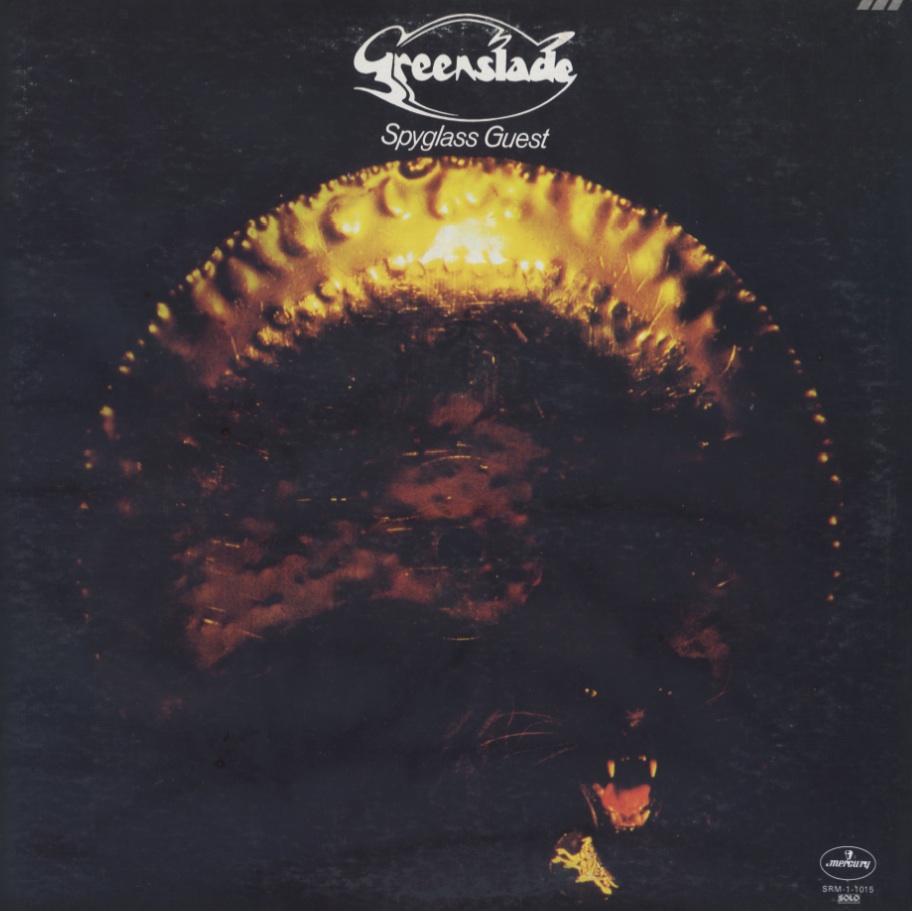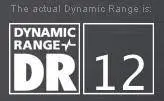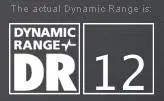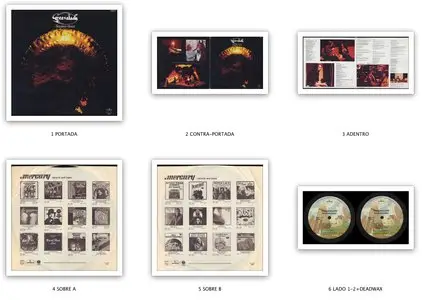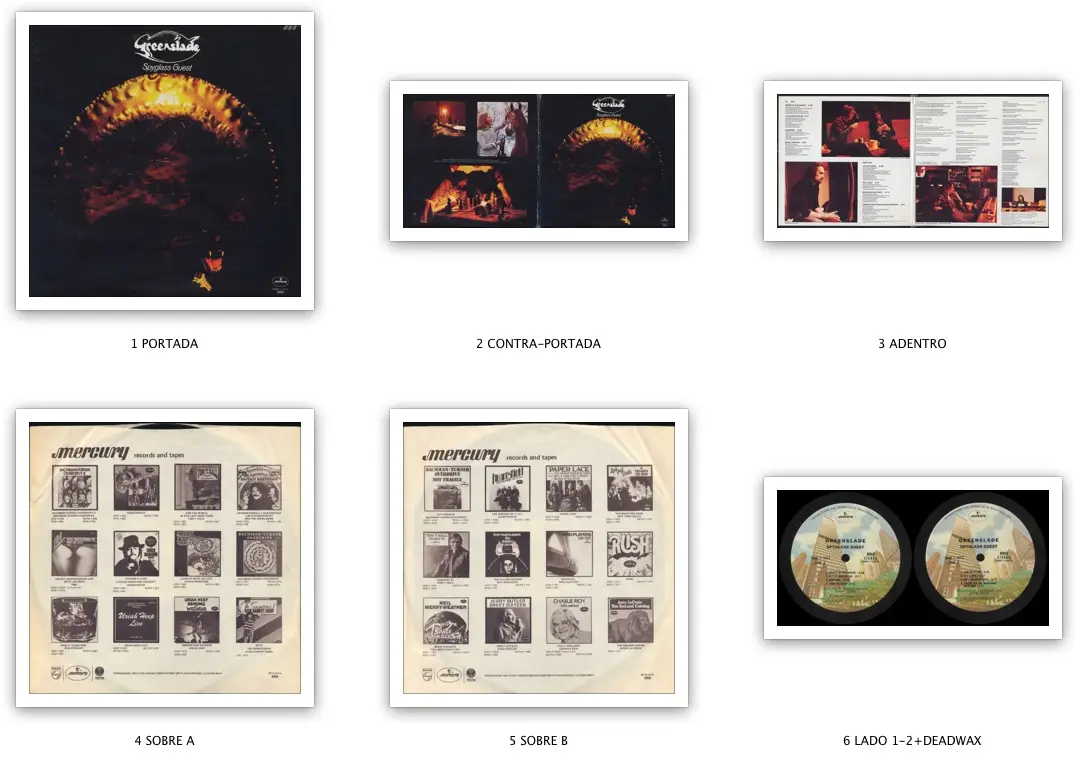Greenslade - Spyglass Guest
Vinyl | LP Cover (1:1) | FLAC + cue | 24bit/96kHz | 900mb
Label: Mercury / SRM 1-1015 | Released: 1974 | Genre: Symphonic-Rock
Side A
Spirit Of The Dance 5:08
Little Red Fry-up 5:11
Rainbow 4:20
Siam Seesaw 4:43
Side B
Joie De Vivre 8:25
Red Light 2:47
Melancholic Race 4:15
Theme For An Imaginary Western 3:51
Credits
Design [Sleeve Design] – Keef (4)
Engineer – Gregg Jackman
Engineer [Assisted By] – Lindsay Kidd
Producer – Greenslade, Jeremy Ensor
Barcode and Other Identifiers
Matrix / Runout (On media SIDE ONE: partly edged): SRM - - 1015 - A - CS2 I GK
Matrix / Runout (On media SIDE TWO: partly edged): SRM - - 1015 - B - CS3 I GK
Vinyl | LP Cover (1:1) | FLAC + cue | 24bit/96kHz | 900mb
Label: Mercury / SRM 1-1015 | Released: 1974 | Genre: Symphonic-Rock
Side A
Spirit Of The Dance 5:08
Little Red Fry-up 5:11
Rainbow 4:20
Siam Seesaw 4:43
Side B
Joie De Vivre 8:25
Red Light 2:47
Melancholic Race 4:15
Theme For An Imaginary Western 3:51
Credits
Design [Sleeve Design] – Keef (4)
Engineer – Gregg Jackman
Engineer [Assisted By] – Lindsay Kidd
Producer – Greenslade, Jeremy Ensor
Barcode and Other Identifiers
Matrix / Runout (On media SIDE ONE: partly edged): SRM - - 1015 - A - CS2 I GK
Matrix / Runout (On media SIDE TWO: partly edged): SRM - - 1015 - B - CS3 I GK
This Rip: EX+/2014
This LP: From my personal collection
Cleaning: RCM Moth MkII Pro Vinyl
Direct Drive Turntable: Marantz 6170
Cartridge: SHURE M97xE
Amplifier: Sansui 9090DB
ADC: E-MU 0404
LP Rip & Full Scan LP Cover: Fran Solo
Password: WITHOUT PASSWORD
Unlike many fellow reviewers, I don't think at all that "Spyglass Guest" is a major artistic turndown in Greenslade's career; while not being obviously as brilliant as its two preceding albums, it is full of good musical ideas, and the energy is still there, palpable and shining brightly. I can't deny that the level of energy has decreased a bit: the reason for that is that an important fracture was starting to show the cracks in the band's integrity - Greenslade and Lawson replaced their mutual complementation for a state of sheer rivalry, with each one of them barely contributing in the instrumentation for the pieces written by the other. But I can tell by the opening track 'Spirit of the Dance' that the essence of the band's musical personality remains untouched, and also that the rules of exquisiteness and melodic sensibility continue to trace and shape Greenslade's direction. Actually, I regard the sequence of tracks 1-5 as fantastic. After the effective, catchy opener, comes the first sung track titled 'Little Red Fry-Up', one more showcase for Lawson's precise keyboard skills and peculiar singing. The absence of Greenslade's performing input and the presence of a guest guitar soloist on this one reveal an increasing interest in the band for assuming a rockier direction for their jazz- oriented prog. as well as the aforementioned internal tension between both keyboardists. Then comes 'Rainbow', perhaps the eeriest piece ever in Greenslade's history: nowhere does Lawson get as ethereal as in this number. Its first section consists of a dialogue between grand piano and synth multi-layers, caught under a storming rain and shades of percussion and drums; then comes the second section, in which Lawson lays his soft electric piano lines while his voice resounds in both the lead and the backing chorale roles. A really inventive way to translate the transition from rain to rainbow into a musical context. 'Siam Seesaw' also includes a spirit of serenity in the main motif that opens up and closes down the track, in which the harpsichord, electric piano and acoustic guitar display an elegant dialogue; this Reeves-penned number is properly enhanced by a faster bluesy interlude. The album's tour-de- force 'Joie de Vivre' finds the band incorporating some folky sources into a symphonic context: Graham Smith's impeccable violin interventions sure help to build this particular element up. The following three numbers prove not to be able to keep up with the level of musical magic achieved by the preceding pieces. Had 'Red Light' been developed further, it wouldn't have been reduced to a nice Lawson effort to approach the Steely Dan thing. 'Melancholic Race' goes more places, but it doesn't match the splendour of the previous instrumentals, while the closure 'Theme for an Imaginary Western' (a cover of a Jack Bruce bluesy ballad) is simply OK, which means that the listener is left without an outstanding climax to leave them truly amazed. Overall rating: 3 ½ - 4 stars.progarchives.com
Welcome to the Dark Side of the Vinyl
Silent spaces haven't been deleted in this rip.
Silent spaces haven't been deleted in this rip.
Vinyl / CUE/ FLAC/ High Definition Cover:



